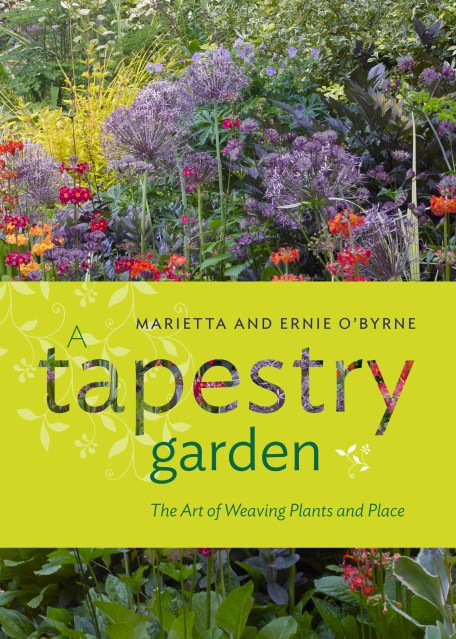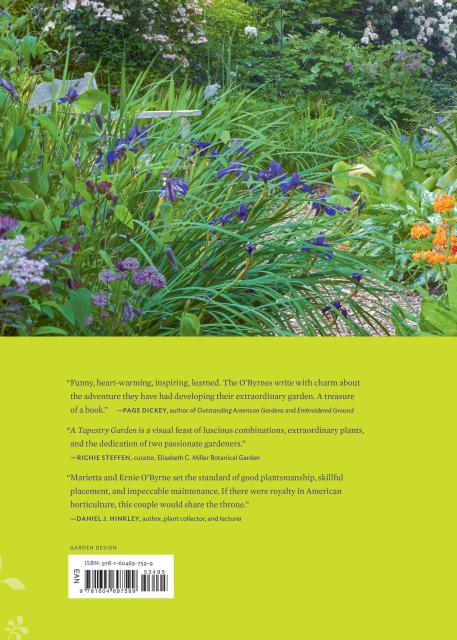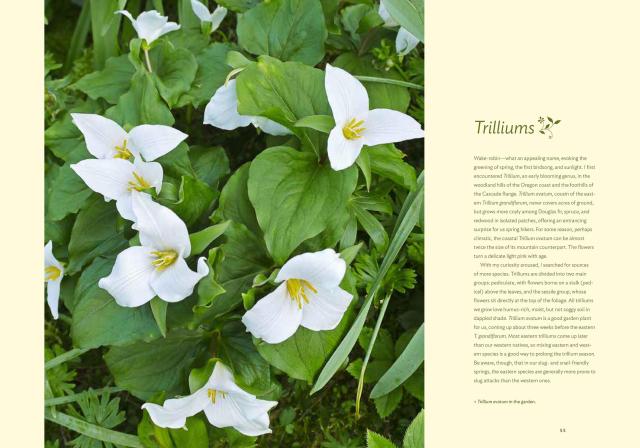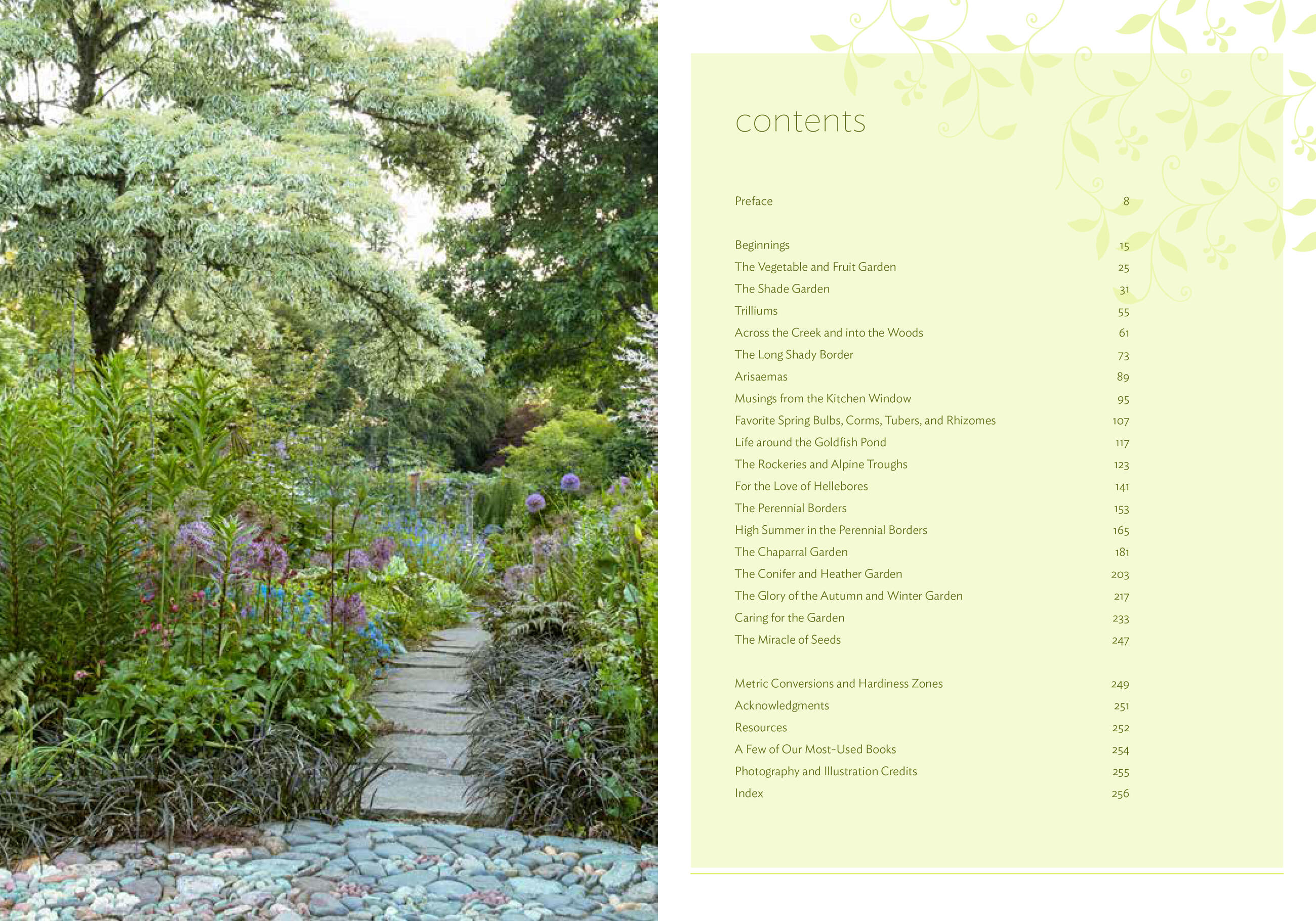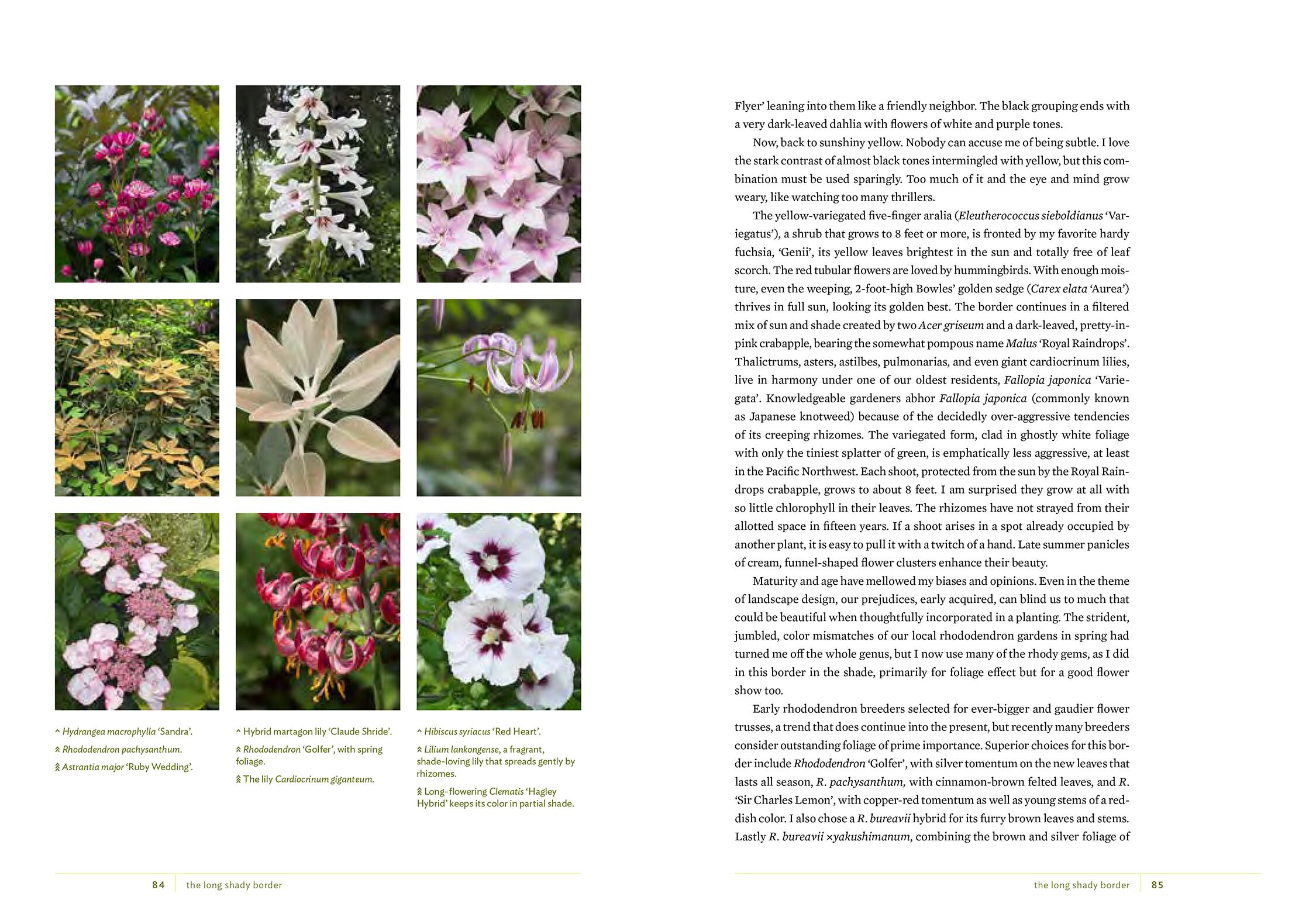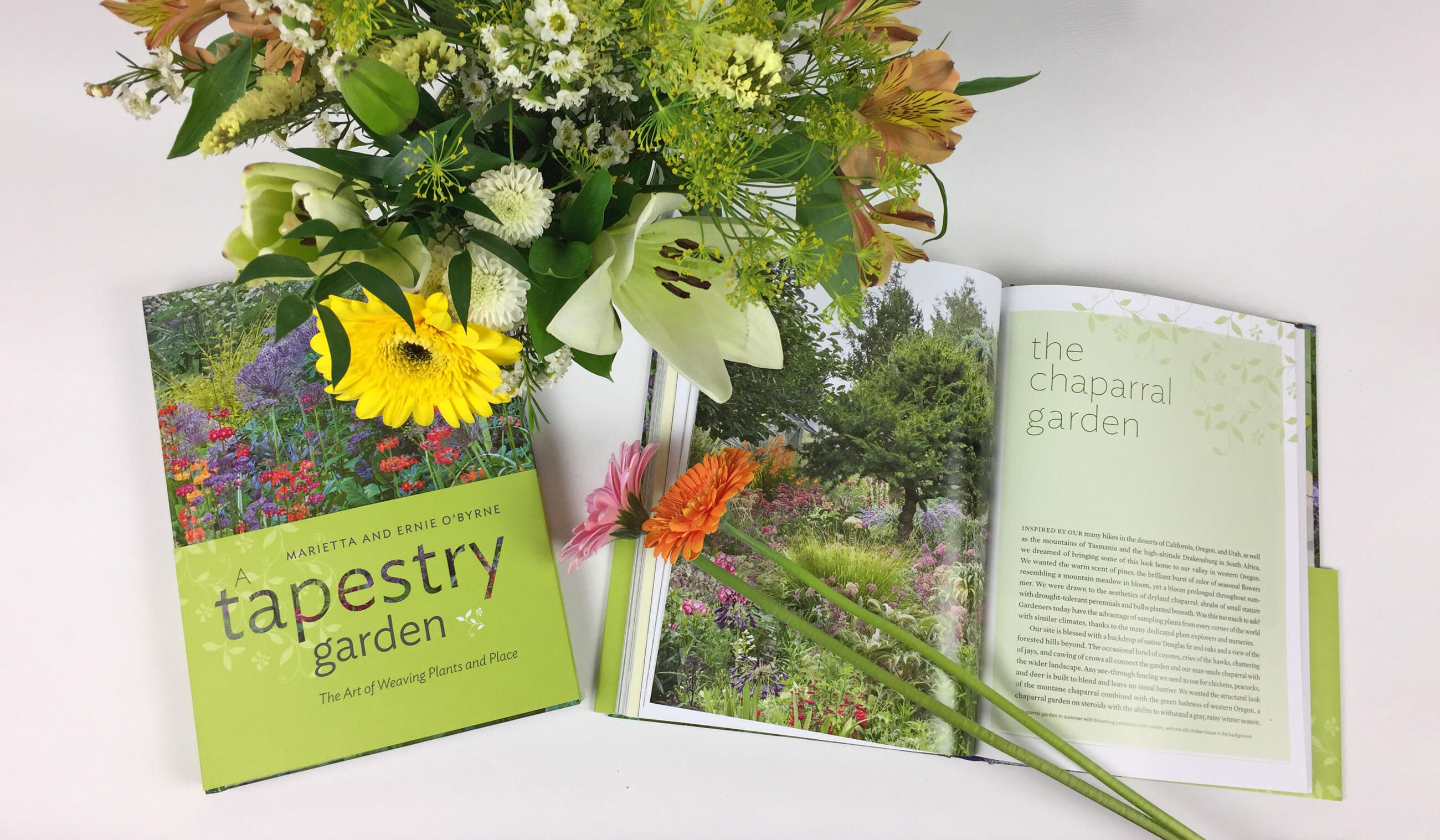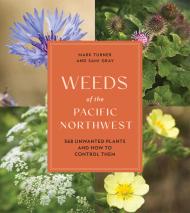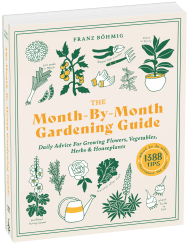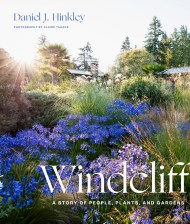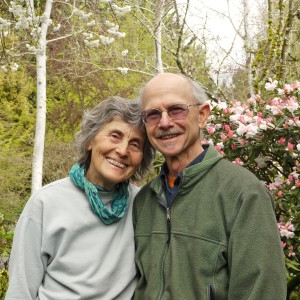Promotion
Use code MOM24 for 20% off site wide + free shipping over $45
A Tapestry Garden
The Art of Weaving Plants and Place
Contributors
By Marietta O’Byrne
Photographs by Doreen Wynja
Formats and Prices
Price
$34.95Price
$46.95 CADFormat
Format:
- Hardcover $34.95 $46.95 CAD
- ebook $16.99 $21.99 CAD
This item is a preorder. Your payment method will be charged immediately, and the product is expected to ship on or around April 26, 2018. This date is subject to change due to shipping delays beyond our control.
Also available from:
“This is a love story about a couple and their relationship with an acre-and-a-half of land. . . with exceptional plant descriptions that read like character references for old friends. . . . beautiful photographs and prose await.” —Library Journal
Marietta and Ernie O’Byrne’s garden—situated on one and a half acres in Eugene, Oregon—is filled with an incredible array of plants from around the world. By consciously leveraging the garden’s many microclimates, they have created a stunning patchwork of exuberant plants that is widely considered one of America’s most outstanding private gardens. In A Tapestry Garden, the O’Byrnes share their deep knowledge of plants and essential garden advice. Readers will discover the humble roots of the garden, explore the numerous habitats and the plants that make them shine, and find inspiration in photography that captures the garden’s astonishing beauty. There is something here for every type of gardener: a shade garden, perennial borders, a chaparral garden, a kitchen garden, and more. Profiles of the O’Byrne’s favorite plants—including hellebores, trilliums, arisaemas, and alpine plants—include comprehensive growing information and tips on pruning and care. A Tapestry Garden captures the spirit of a very special place.
Marietta and Ernie O’Byrne’s garden—situated on one and a half acres in Eugene, Oregon—is filled with an incredible array of plants from around the world. By consciously leveraging the garden’s many microclimates, they have created a stunning patchwork of exuberant plants that is widely considered one of America’s most outstanding private gardens. In A Tapestry Garden, the O’Byrnes share their deep knowledge of plants and essential garden advice. Readers will discover the humble roots of the garden, explore the numerous habitats and the plants that make them shine, and find inspiration in photography that captures the garden’s astonishing beauty. There is something here for every type of gardener: a shade garden, perennial borders, a chaparral garden, a kitchen garden, and more. Profiles of the O’Byrne’s favorite plants—including hellebores, trilliums, arisaemas, and alpine plants—include comprehensive growing information and tips on pruning and care. A Tapestry Garden captures the spirit of a very special place.
Genre:
-
“The plants and the devotion to them define this garden. The tapestry in the title is a reference to the interwoven nature of the countless flora. But the tapestry is also, clearly, a place threaded by time and by the lives of its creators.” —The Washington Post
“This is a love story about a couple and their relationship with an acre-and-a-half of land. . . with exceptional plant descriptions that read like character references for old friends. . . . beautiful photographs and prose await.” —Library Journal
“Home-garden enthusiasts looking for ideas will enjoy reading about the motivations and philosophies behind the gradual creation of these spaces and will appreciate the lessons learned and the plant-care advice.” —Booklist
“The book is illustrated with full-page landscape photos as well as detail shots, and the photography pairs well with the authors’ ruminative prose, which describes the garden and the thinking that governed its evolution. . . . every green thumb can find inspiration in this stunning and imaginatively cultivated garden.” —Publishers Weekly starred review
“This is the fascinating story of a tireless and simpatico couple, a pair of gardeners who have spent more than 40 years assembling a mind-boggling collection of plants and installing them in unexpected, sometimes truly revolutionary, combinations. . . . Throughout the book we are offered useful tidbits and advice. . . [and] informative sections on specific plants such as Arisaemas; trilliums; bulbs, corms, tubers, and rhizomes; and hellebores. . . . remarkably cheery and philosophical.” —Gardenista
“Full of unexpected plant combinations in various microclimates to bookmark for your own garden.” —Better Homes and Gardens
“Beautiful photography. . . . full of plants from around the world.” —Garden Design
“This book is the story of two people following a life-long dream: to live in the natural world and earn a living from it, to create landscapes of impossible beauty. . . . there is something in this book for everyone, and it's one of the most inspiring garden stories you'll ever read.” —Garden Design Online
“A beautiful partnership that created a spectacular garden.” —The American Gardener
“Obviously a labor of love, this garden and its heart-warming story provide humor, inspiration, and guidance to gardeners at all levels.” —Choice
“Masterpiece of a garden. . . . Whether you are an armchair gardener or gardener with grubby hands. . . . When you read this book, you will rejoice.” —Country Gardens
“Many designers will find their planting combinations inspiring.” —Carolyn Mullet, garden designer
“Funny, heart-warming, inspiring, learned. The O’Byrnes write with charm about the adventure they have had developing their extraordinary garden. A treasure of a book.” —Page Dickey, author of Outstanding American Gardens and Embroidered Ground
“A Tapestry Garden is a visual feast of luscious combinations, extraordinary plants, and the dedication of two passionate gardeners.” —Richie Steffen, curator of Elisabeth C. Miller Botanical Garden
“Marietta and Ernie O’Byrne set the standard of good plantsmanship, skillful placement, and impeccable maintenance. If there were royalty in American horticulture, this couple would share the throne.” —Daniel J. Hinkley, author, plant collecto
- On Sale
- Apr 26, 2018
- Page Count
- 264 pages
- Publisher
- Timber Press
- ISBN-13
- 9781604697599
Newsletter Signup
By clicking ‘Sign Up,’ I acknowledge that I have read and agree to Hachette Book Group’s Privacy Policy and Terms of Use
